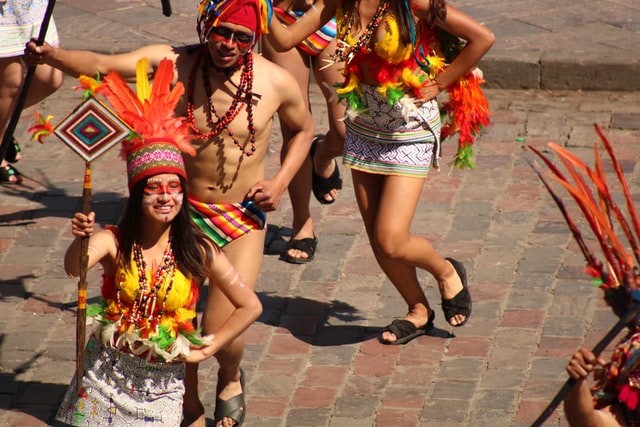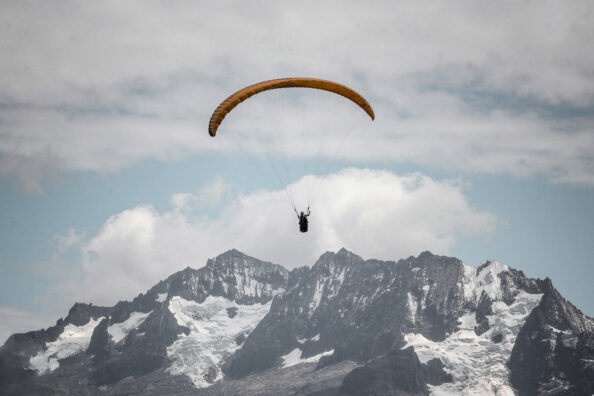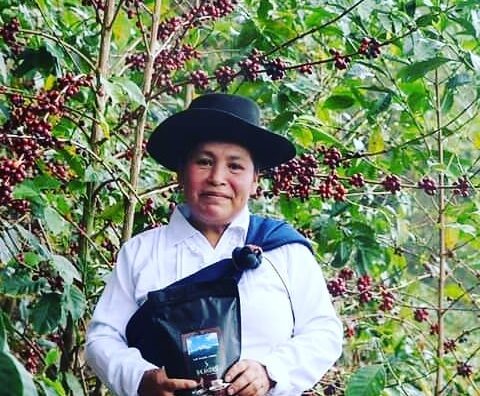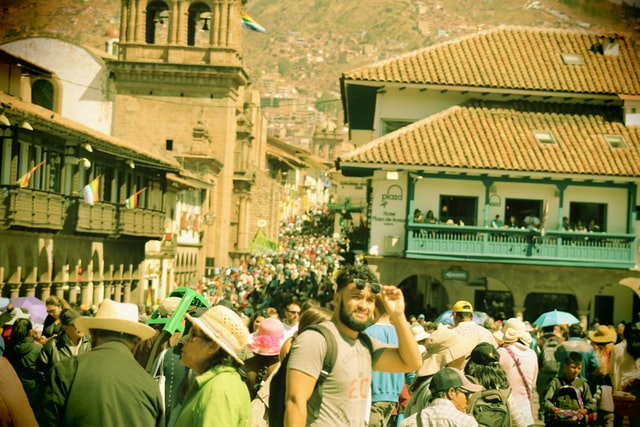
Ch’iaraje / January 20
Province of Canas, district of Yanaoca (community of Checa).
Ritual fight between the inhabitants of the communities of Checa and Quehue, who face each other in a warrior game to promote the fertility of the land.The winning community is that which occupies the most land. The men, armed with slings, leather whips and sticks, wear vests adorned with flowers. The women help by caring for the horses and collecting stones and encourage the men by singing.
Toqto Fights / February 2
Province of Chumbivilcas, District of Livitaca (Toctopata)
They are carried out in the place called Tocto, located between the districts of Yanaoca and Livitaca. They last three days, in which the struggles to win more land for cultivation are evoked. On the first day the participants settle in the place, the second day individual fights begin and then groups of five and up to ten people are formed. After eating and drinking, they all fight until the third day, during which they collect their wounded and perform the qhaswa (rounds where they celebrate losers and winners).
Qoyllority / Date can be modified
Province of Quispicanchi, District of Ocongate.
Pilgrimage to the summit of Sinaqara in the snowy Vilcanota Mountain Range of Ausangate. The path is accompanied by a procession, dances, music bands, fireworks and the symbolic market of illusions and desires (miniature handicraft fair). This festival brings together two traditions – the Andean and the Catholic – as it celebrates the appearance of the image of Christ on a solid rock at 4,750 meters above sea level and at the same time the worship of the Apu Ausangate.
Corpus Christi / Date can be modified
Province of Cusco, District of Cusco.
Procession of the images of 16 patron saints highly venerated in the city. The processions include bands of musicians and folklore groups. The typical and classic dish of this festivity is the «chiri uchu» (elaborated with roasted guinea pig with cecina, toasted corn, rocoto, boiled chicken, cheese, cochayuyo, sausage, fish eggs, corn tortilla).
Inti Raymi / June 24
Province of Cusco, District of Cusco.
A scene that expresses the harmonious relationship of man with the Sun God, the maximum divinity of the Incas. It takes place on the winter solstice. At the moment it begins in the Qoricancha and continues towards the Plaza de Armas, to finally arrive at the Saccsayhuaman esplanade.
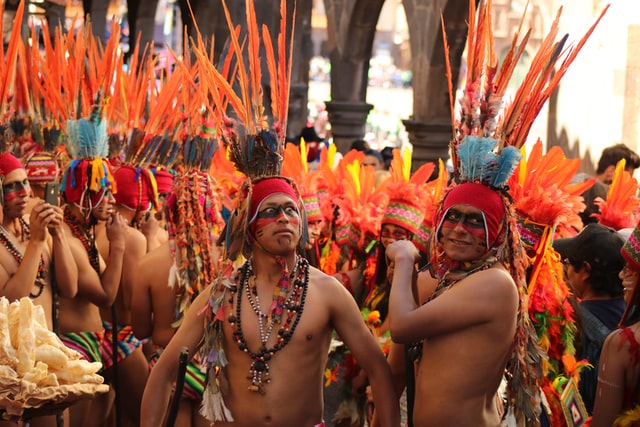
Our Lady Virgen del Carmen / July 15th-18th
Province of Paucartambo, District of Paucartambo.
In Paucartambo, Pisaq and other towns of the region the festivity of the Virgin of Carmen is celebrated, not only with a procession, but also with music and dances. The entrance begins on July 15, it starts with the explosion of a rocket, the same that is answered by chimes and bells, the interpretation of targets by the musical bands; Afterwards, the entrance of the groups and the «cera apaycuy» take place, the night is opportune to begin the «qonoy» or bonfire, where the Q’ollas, Chunchus and Maqtas stage the purgatory, showing off their tricks, races and acrobatic jumps. The central day is July 16th, it begins at 5 am with a mass of Aurora and at 10 am the awaited mass of celebration where beautiful songs of Qollas and black Qhapac stand out, followed by comparsas that dance in streets and squares. The great procession of the Virgin of Carmen begins at 3 p.m. and on the roofs and balconies, the Saq’ras wait for the «mamacha». The festivity is very lavish, varied and colorful, the dancing groups of Maqtas, Auqachileno, Contradanza, Chunchachas, Chukchu, Kachampa, Majeño, Panadero, Qhapac Negro, Qhapac Chuncho, Qhapac Qolla, Qoyacha, Saqra, Siclla Huayra or Doctorcito and Waca Waca.
The festivals of Paucartambo, Pisaq and Huarocondo are considered the best in folkloric demonstration in the region.
Pachamama Raymi or Mother Earth Day / August 1st
Celebration in the whole Cusco Region.
On this date the following festivals take place: «Pachamamaraymi» (district of Ccatca), the «Wataqallariy» (district of Maras) and the Kinturaymi (district of Oropesa, town of Huasao). An Andean rite in which the Pachamama (Mother Earth) is worshipped and paid tribute to in a special ceremony called «payment to the earth» with offerings of coca leaves, chicha de jora and huayruros seeds (mystical seeds of the jungle). This ritual marks the beginning of the Andean New Year.
Lord of Huanca / September 14th
Province of Calca, District of San Salvador.
The history of the Lord of Huanca begins in 1675 when, it is said, Jesus Christ appeared in a cave before the Indian Diego Quispe. His vivid story inspired one of the best painters of the time to represent the image on the rock. The cult (recognized in 1779) has its central day on September 14 and devotees arrive from remote places in Peru and Bolivia to cure their afflictions of body and soul.
